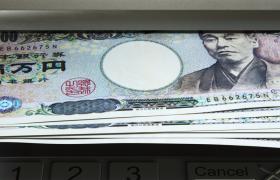Guide to MYR Forecasts
One of the first things you’ll notice about the Malaysian Ringgit (especially if you’ve just come from India, the U.S or somewhere else where the money all looks the same) is that it’s super colourful. This will make it a bit easier to learn the denominations while you’re standing at the counter calculating the exchange rate in your head, fumbling for the right denominations in your wallet, all while the impatient locals are staring a hole in the back of your head. But that’s all part of the fun of travelling.
Malaysian ringgits come in denominations of RM1, RM5, RM10, RM20, RM50, and RM100 – don’t let any cheeky shopkeepers try to give you a RM500 or RM1000 note either as these were discontinued in the 90’s by the Government to help fight money laundering. On second thoughts, they could actually be a pretty good collectible if you know what you’ve got!
The Malaysian ringgit goes down below 100 sen (cents) with coins in denominations of 1, 5, 10, 20, and 50 sen including a number of coins that feel like play money. Don’t be surprised either to find candies in your hand in lieu of some smaller denomination coins, especially from supermarket chains that couldn’t be bothered dealing with small change.
A little bit of history; Ringgit actually translates to "jagged" in the Malay language and refers to the old Spanish silver dollar coins that were once used in Malaysia during colonial times that had rough edges.
Now that you know a little bit about the MYR, let’s take a look at what some of the big banks have forecast for the AUD-MYR exchange rate so you can get a better idea of how to get the most bang for your buck before your trip. Keep in mind that economists and the banks use dozens of formulae and input all kinds of data to come to these forecasts, but they’re not always spot on. Make sure you’re keeping up to date with currency fluctuations with our AUD News and Rate alerts just to be all over it.
AUD to MYR Forecasts
| AUD/MYR | Mean (of 33 bank forecasts) | Commerzbank | ANZ | |||
| Seasonality | Q3 2020 | Q4 2020 | Q3 2020 | Q4 2020 | Q3 2020 | Q4 2020 |
| Excahnge Rate | 2.87 | 2.88 | 3.01 | 3.09 | 2.83 | 2.76 |
| Exchange 2k in AUD | 5740 MYR | 5760 MYR | 6020 MYR | 6180 MYR | 5660 MYR | 5520 MYR |
| Difference | 20 MYR | 160 MYR | -140 MYR | |||
As you can see, there’s a bit of a difference between the ANZ, Commerzbank and mean forecasts of 33 banks. That’s quite normal for foreign exchange forecasts simply because of the vast nature of scenarios that can affect exchange rates around the world.
With a little bit of research and putting 2 and 2 together Aussie travellers can still get a pretty good insight into the dynamics affecting fluctuations in the value of the AUD against the MYR though. The first step is to get an understanding of the technical jargon economists use along with the macroeconomic fundamentals and their influence on exchange rates.
Appreciation
Is when the value of one currency increases relative to another. E.g. When the AUD goes from 2.87 MYR to 3.0 MYR it has appreciated. Travellers appreciate this too, because it means more spending money and who doesn’t appreciate that?
Depreciation
Is when the value of a currency decreases relative to another. E.g. When the AUD drops from 2.87 MYR back to 2.84 MYR it has depreciated and you are depressed.
Higher valued currency
Cheaper imports (no more abandoning that online shopping cart), more expensive exports and extra spending money at the markets.
Lower valued currency
Means more expensive imports, cheaper exports, more people overseas and less cash for your Malaysian adventure.
Inflation
The rate at which the general level of prices for goods and services is rising and, in turn, a currency’s purchasing power is falling. In other words, $10 back in the day used to get you a lot more than it does now - over time the value of a currency decreases as a result of supply and demand.
Economic growth
The increase in an economy’s capacity to produce goods and services. Growth is generally good, but we don’t want it to be too fast.
Bearish vs Bullish
Refer to currency or equity markets and the general sentiment of the people that trade in them. A bull market is when the buyers are optimistic about the rise in the prices of shares or currency and bulls are people spruiking a market as being in this positive zone. When a bull is angry and attacks, it uses its horns in an upward goring manner, that’s why a bull market is one that is going up. Bear markets are full of pessimism and dropping value in currency or stocks and bears are the doomsayers (or realists) during these times. Bears swipe down when they attack, that’s why bear markets are going down.
Survived the Bull and Bear attack? Good, now it’s on to the trickier stuff. Hold on tight, these are the things that really stir up foreign exchange markets and affect currency forecasts.





The main thing to remember is that a lot of things go into forecasting foreign exchange rates and a multitude of factors can give a currency a boost upwards, or a sharp fall downwards and not everyone gets it right.
One of the biggest and most important to identify drivers of a currency’s value is consumer sentiment. Consumer sentiment is a reflection of the broader economic climate and how the market views a currency. The more confidence investors have in an economy the better the currency usually performs. Events such as knifing prime ministers, trade wars, dropping interest rates and natural disasters can all have a major effect on consumers’ confidence in both the country and the currency. Think of it like this:
More trust = more people willing to invest in the country = greater demand for currency = appreciation
Less trust = less foreign capital invested into country = decreased demand for currency = depreciation
Still don’t feel like you’ve got it all? Don’t worry. We’ll do all the hard work while you relax and we’ll let you know when the AUD hits your preferred MYR rate, just sign yourself up for our Rate Alerts. When you do bite the bullet and exchange your precious Aussie dollars, don’t forget to add Rate Move Guarantee to your transaction in store to protect yourself and your back pocket from any quick drops in currency value. It’s free and will protect you against exchange rate movements within 14 days of purchase. If it improves we will refund you the difference! How good is that?
*Prices are approximations based on the difference between mean estimates for AUD to MYR in Q3 2019 and Q4 2019. Keep in mind prices may vary across states and individual vendors. Cost and quantity estimations should be used as a guide only. This blog is provided for information only and does not take into consideration your objectives, financial situation or needs. You should consider whether the information and suggestions contained in any blog entry are appropriate for you, having regard to your own objectives, financial situation and needs. While we take reasonable care in providing the blog, we give no warranties or representations that it is complete or accurate, or is appropriate for you. We are not liable for any loss caused, whether due to negligence or otherwise, arising from use of, or reliance on, the information and/or suggestions contained in this blog. Terms and conditions apply to Rate Guard. See travelmoney.co.nz/rate-guard for more details.












